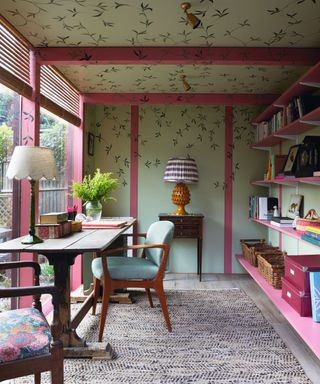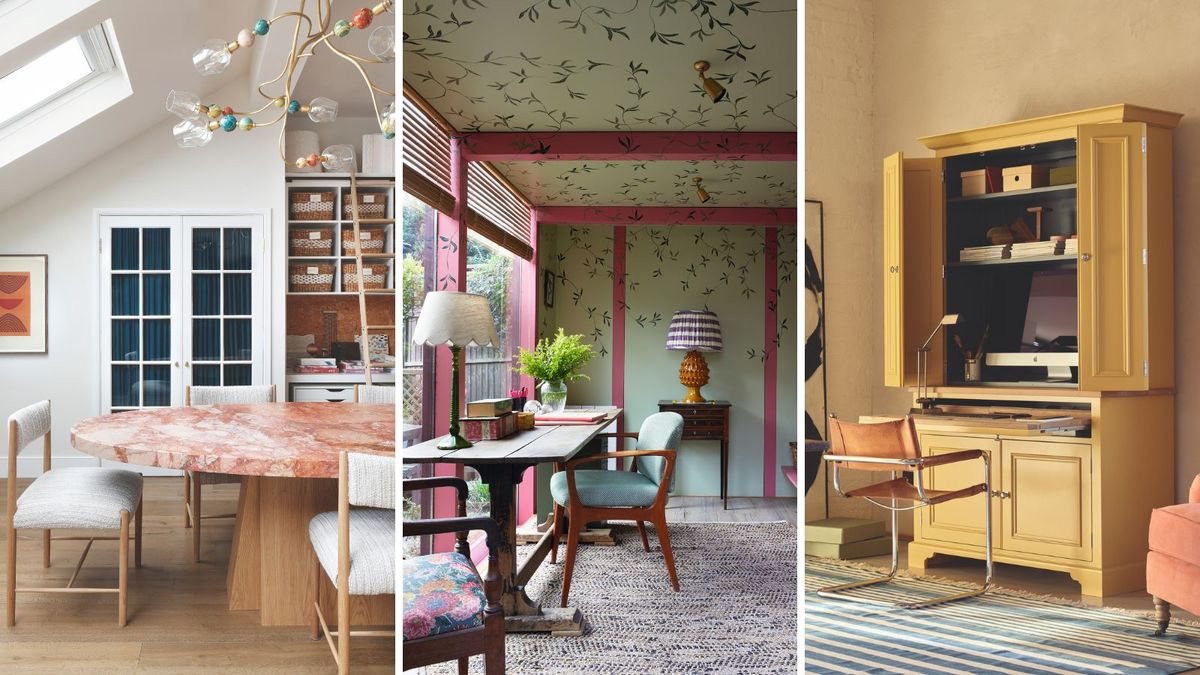There are many things to weigh up when planning the interior style of a workspace in the home. Daily deliveries and the demands of household pets can mean it’s more convenient to have a centrally based homeworking space, yet it’s useful to have some separation between the messiness of the rest of your life and work.
All too often, home offices are afterthoughts dressed with overly practical furniture and unsightly storage units, or consist of a desk in an unloved corner. But our home office spaces should and can be joyful spaces that help us to focus, while still feeling cossetting, and in harmony with the rest of our home. These interior designers show us how to achieve this.
7 home offices that don’t look like home offices
Homeworking spaces are rarely the most standout spot in the home, but these interior designers have challenged that, overturning the stereotypical office look in favor of something more vibrant and interesting.
We take a look at some examples of how to design a work-from-home zone that doesn’t feel like an office – one you’ll look forward to working in, that perfectly toes the line between form and function.
1. Decorate with color and pattern

(Image credit: Paul Massey)
This colorful home office is a great example of how you can create some separation between a feeling of ‘home’ and ‘office’, whilst foregoing the commute. Designed by Laura Stephens and set in the garden, it is decorated to feel like a cozy extension of the house.
‘We commissioned an artist to paint a mural of leaves and vines on the walls and ceiling to reflect the surrounding foliage and pink beams were added to inject color and structure into the space’, says Laura.
2. Introduce a pattern clash
(Image credit: Ben Stevens)
Kate Guinness designed this small home office space with a print-clashing wallpaper by Ottoline and a blind in a fabric by Vaughan. Here, she’s also made the window look bigger by hanging the blind a little higher and wider than the actual perimeter of the window to give the illusion of it being larger.
‘Using fabrics with vertical patterns adds height to windows, while horizontal ones give the impression of width, both of which we used in this small home office to make it feel light and airy,’ she says
3. Create a cozy corner in a room you already love
(Image credit: Harry Crowder)
The barely-there home office is a room that looks to all intents and purposes like a sitting room, with the exception that there is a flat surface and a chair that can, when required, be transformed into a place of work.
Here, the decorative scheme for the sitting room is the priority, and the work area is subordinate. ‘With this room, we worked backward,’ says interior designer Lucy Cunningham. ‘The client loved these vintage lights, which were already in place, so to create a contrast and allow them to become a feature, we opted for a neutral color palette and some pretty patterns, creating a light and airy feel around the heavier, more contemporary look of the lights.’
4. Make it textural and use warm-toned colors
(Image credit: Simon Brown)
When it comes to colors, artistic types might like to be surrounded by white walls, while others will prefer to be cocooned by a warm hue. ‘This shot is taken through the study’s double doors which are up the stairs off the half landing,’ says Venetia Rudebeck of Studio Vero, who designed this scheme.
‘The color is warm, rich, and inviting; it’s a burnt orange grasscloth that adds a joyful pop of color and is both cozy in winter and vibrant in the warmer months’.
5. Introduce some eye-catching pieces
(Image credit: Alexander James)
Bland is rarely a source of inspiration for anyone – so believes Sarah Peake, founder of Studio Peake, who recently redesigned this former Victorian bakery in west London into a new home for her team. Part gallery, part office, and part showroom, she worked with several craftspeople to commission pieces that now form part of her line of furniture.
They include the eye-catching chandelier, which was made in collaboration with Pierre-Yves Morel, and the table, which was designed together with Porter Studio. ‘I wanted to build a home for us that inspires creativity and better design, and the result is a celebration of craft and creativity,’ says Sarah.
6. Fill your space with plenty of natural materials
(Image credit: Murudé)
Murude Katipoglu, founder of Murudé, designed this study on the top floor of a riverside residence. ‘Our clients, a creative couple who primarily work from home, desired a space that is both inspiring and filled with natural light and riverside views,’ she says.
She continues, ‘The desk design is inspired by an antique table sourced from France, which I have cherished for a long time. We adapted this design into a desk that perfectly fits the space, incorporating clever home office storage solutions, cable management, and a beautiful inlaid leather top’.
7. Store your desk in a beautifully colored cabinet
(Image credit: Neptune)
‘These days, a home office can often be folded away into a drawer or cupboard at the end of each day, making rooms more multifunctional without unnecessary clutter,’ says Simon Temprell, interior design manager at Neptune.
‘A workstation cabinet incorporates a slide-out desk, storage for files and books, and the opportunity to close it away, leaving nothing more but a beautiful piece of furniture’.
There’s no need to settle for anything less than a work-from-home spot that fills you with joy. Whether you’re making the most of a corner in your sitting room, getting creative with disused garden space, or have a spare room fit for purpose, by embracing color, pattern, texture, and statement pieces, you can create a homely spot that captures your style whilst helping you to focus.
link

